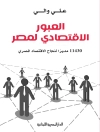Your ultimate go-to project management bible
Perform Be Agile! Time-crunch! Right now, the business world has never moved so fast and project managers have never been so much in demand—the Project Management Institute has estimated that industries will need at least 87 million employees with the full spectrum of PM skills by 2027. To help you meet those needs and expectations in time, Project Management All-in-One For Dummies provides with all the hands-on information and advice you need to take your organizational, planning, and execution skills to new heights.
Packed with on-point PM wisdom, these 7 mini-books—including the bestselling Project Management and Agile Project Management For Dummies—help you and your team hit maximum productivity by razor-honing your skills in sizing, organizing, and scheduling projects for ultimate effectiveness. You’ll also find everything you need to overdeliver in a good way when choosing the right tech and software, assessing risk, and dodging the pitfalls that can snarl up even the best-laid plans.
- Apply formats and formulas and checklists
- Manage Continuous Process Improvement
- Resolve conflict in teams and hierarchies
- Rescue distressed projects
विषयसूची
Introduction 1
About This Book 1
Foolish Assumptions 2
Icons Used in This Book 2
Beyond the Book 3
Where to Go from Here 3
Book 1: In the Beginning: Project Management Basics 5
Chapter 1: Achieving Results with Project Management 7
Determining What Makes a Project a Project 7
Understanding the three main components that define a project 8
Recognizing the diversity of projects 10
Describing the four phases of a project life cycle 10
Defining Project Management 12
Starting with the initiating processes 13
Outlining the planning processes 14
Examining the executing processes 15
Surveying the monitoring and controlling processes 16
Ending with the closing processes 17
Knowing the Project Manager’s Role 17
Looking at the project manager’s tasks 18
Staving off excuses for not following a structured project-management approach 18
Avoiding shortcuts 19
Staying aware of other potential challenges 20
Chapter 2: Involving the Right People 23
Understanding Your Project’s Stakeholders 24
Developing a Stakeholder Register 24
Starting your stakeholder register 25
Ensuring your stakeholder register is complete and up to date 28
Using a stakeholder register template 30
Determining Whether Stakeholders Are Drivers, Supporters, or Observers 31
Distinguishing the different groups 32
Deciding when to involve your stakeholders 33
Using different methods to involve your stakeholders 36
Making the most of your stakeholders’ involvement 37
Displaying Your Stakeholder Register 38
Confirming Your Stakeholders’ Authority 39
Assessing Your Stakeholders’ Power and Interest 40
Chapter 3: Developing Your Game Plan 43
Divide and Conquer: Breaking Your Project into Manageable Chunks 43
Thinking in detail 44
Identifying necessary project work with a work breakdown structure 45
Dealing with special situations 53
Creating and Displaying Your Work Breakdown Structure 57
Considering different schemes to create your WBS hierarchy 57
Using one of two approaches to develop your WBS 58
Categorizing your project’s work 60
Labeling your WBS entries 61
Displaying your WBS in different formats 62
Improving the quality of your WBS 66
Using templates 66
Identifying Risks While Detailing Your Work 68
Documenting What You Need to Know about Your Planned Project Work 70
Book 2: Steering the Ship: Planning and Managing a Project 71
Chapter 1: You Want This Project Done When? 73
Picture This: Illustrating a Work Plan with a Network Diagram 74
Defining a network diagram’s elements 74
Drawing a network diagram 76
Analyzing a Network Diagram 77
Reading a network diagram 77
Interpreting a network diagram 79
Working with Your Project’s Network Diagram 84
Determining precedence 84
Using a network diagram to analyze a simple example 87
Developing Your Project’s Schedule 92
Taking the first steps 92
Avoiding the pitfall of backing in to your schedule 93
Meeting an established time constraint 94
Applying different strategies to arrive at your destination in less time 95
Estimating Activity Duration 102
Determining the underlying factors 103
Considering resource characteristics 103
Finding sources of supporting information 104
Improving activity duration estimates 104
Displaying Your Project’s Schedule 106
Chapter 2: Starting Your Project Team Off on the Right Foot 111
Finalizing Your Project’s Participants 112
Are you in? Confirming your team members’ participation 112
Assuring that others are on board 114
Filling in the blanks 115
Developing Your Team 116
Reviewing the approved project plan 117
Developing team and individual goals 118
Specifying team-member roles 118
Defining your team’s operating processes 119
Supporting the development of team-member relationships 120
Resolving conflicts 120
All together now: Helping your team become a smooth-functioning unit 123
Laying the Groundwork for Controlling Your Project 125
Selecting and preparing your tracking systems 125
Establishing schedules for reports and meetings 126
Setting your project’s baseline 127
Hear Ye, Hear Ye! Announcing Your Project 127
Setting the Stage for Your Post-Project Evaluation 128
Chapter 3: Monitoring Progress and Maintaining Control 129
Holding the Reins: Project Control 130
Establishing Project Management Information Systems 131
The clock’s ticking: Monitoring schedule performance 132
All in a day’s work: Monitoring work effort 138
Follow the money: Monitoring expenditures 143
Putting Your Control Process into Action 147
Heading off problems before they occur 147
Formalizing your control process 148
Identifying possible causes of delays and variances 149
Identifying possible corrective actions 150
Getting back on track: Rebaselining 151
Reacting Responsibly When Changes Are Requested 151
Responding to change requests 152
Creeping away from scope creep 153
Chapter 4: Bringing Your Project to Closure 155
Staying the Course to Completion 156
Planning ahead for your project’s closure 156
Updating your initial closure plans when you’re ready to wind down the project 157
Charging up your team for the sprint to the finish line 158
Handling Administrative Issues 158
Providing a Smooth Transition for Team Members 159
Surveying the Results: The Post-Project Evaluation 160
Preparing for the evaluation throughout the project 161
Setting the stage for the evaluation meeting 162
Conducting the evaluation meeting 163
Following up on the evaluation 165
Book 3: Helping Out: Using Tools on a Project 167
Chapter 1: Considering Checklists and Templates 169
Using Checklists Properly 170
Understanding Checklist Types 171
Trying Templates 172
Reviewing Project Structure 173
Kicking off the project 173
Doing the planning 175
Delivering project products 175
Closing the project 176
Evaluating the project 176
Chapter 2: The Key Documents for Managing a Project 179
Kicking Off 180
Project Planning 180
The major planning documents 180
The logs 181
Control checklists 182
Controlling a Project 183
Thinking About What You Need 184
Chapter 3: Working with Microsoft Project 2019 185
Connecting Project 2019 to Project Management 186
Defining “project manager” 187
Identifying what a project manager does 187
Introducing Project 2019 188
Getting to Know You 189
Opening Project 2019 189
Navigating Ribbon tabs and the Ribbon 191
Displaying more tools 194
An Updated Feature: Tell Me What You Want to Do 196
Chapter 4: Surveying Cool Shortcuts in Project 2019 197
Task Information 197
Resource Information 198
Frequently Used Functions 199
Subtasks 200
Quick Selections 200
Fill Down 200
Navigation 200
Hours to Years 201
Timeline Shortcuts 201
Quick Undo and Repeat 202
Book 4: A New Method: Agile Project Management 203
Chapter 1: Applying the Agile Manifesto and Principles 205
Understanding the Agile Manifesto 205
Outlining the Four Values of the Agile Manifesto 208
Value 1: Individuals and interactions over processes and tools 209
Value 2: Working software over comprehensive documentation 210
Value 3: Customer collaboration over contract negotiation 212
Value 4: Responding to change over following a plan 213
Defining the 12 Agile Principles 214
Agile principles of customer satisfaction 216
Agile principles of quality 218
Agile principles of teamwork 220
Agile principles of product development 222
Adding the Platinum Principles 226
Resisting formality 226
Thinking and acting as a team 227
Visualizing rather than writing 228
Seeing Changes as a Result of Agile Values 229
Taking the Agile Litmus Test 230
Chapter 2: Defining the Product Vision and Product Roadmap 233
Agile Planning 234
Progressive elaboration 236
Inspect and adapt 237
Defining the Product Vision 237
Step 1: Developing the product objective 239
Step 2: Creating a draft vision statement 239
Step 3: Validating and revising the vision statement 241
Step 4: Finalizing the vision statement 242
Creating a Product Roadmap 243
Step 1: Identifying product stakeholders 244
Step 2: Establishing product requirements 245
Step 3: Arranging product features 245
Step 4: Estimating efforts and ordering requirements 247
Step 5: Determining high-level time frames 250
Saving your work 250
Completing the Product Backlog 251
Chapter 3: Planning Releases and Sprints 253
Refining Requirements and Estimates 253
What is a user story? 254
Steps to create a user story 256
Breaking down requirements 260
Estimation poker 262
Affinity estimating 265
Release Planning 267
Preparing for Release 271
Preparing the product for deployment 271
Prepare for operational support 272
Preparing the organization 273
Preparing the marketplace 274
Sprint Planning 275
The sprint backlog 276
The sprint planning meeting 277
Chapter 4: Working throughout the Day 285
Planning Your Day: The Daily Scrum 285
Covering important topics 286
Ensuring an effective meeting 287
Tracking Progress 289
The sprint backlog 289
The task board 292
Understanding Agile Roles in the Sprint 294
Keys for daily product owner success 295
Keys for daily development team member success 296
Keys for daily scrum master success 297
Keys for daily stakeholder success 298
Keys for daily agile mentor success 298
Creating Shippable Functionality 299
Elaborating 300
Developing 300
Verifying 301
Identifying roadblocks 304
Implementing Information Radiators 305
Wrapping Up at the End of the Day 307
Chapter 5: Showcasing Work, Inspecting, and Adapting 309
The Sprint Review 309
Preparing to demonstrate 310
The sprint review meeting 311
Collecting feedback in the sprint review meeting 314
The Sprint Retrospective 315
Planning for retrospectives 317
The retrospective meeting 317
Inspecting and adapting 319
Book 5: A Popular Agile Approach: Running a Scrum Project 321
Chapter 1: The First Steps of Scrum 323
Getting Your Scrum On 323
Show me the money 324
I want it now 325
I’m not sure what I want 326
Is that bug a problem? 327
Your company’s culture 327
The Power in the Product Owner 327
Why Product Owners Love Scrum 329
The Company Goal and Strategy: Stage 1 331
Structuring your vision 332
Finding the crosshair 333
The Scrum Master 333
Scrum master traits 334
Scrum master as servant leader 335
Why scrum masters love scrum 335
Common Roles Outside Scrum 336
Stakeholders 336
Scrum mentors 337
Chapter 2: Planning Your Project 339
The Product Roadmap: Stage 2 339
Take the long view 340
Use simple tools 341
Create your product roadmap 342
Set your time frame 343
Breaking Down Requirements 345
Prioritization of requirements 345
Levels of decomposition 346
Seven steps of requirement building 346
Your Product Backlog 347
The dynamic to-do list 349
Product backlog refinement 349
Other possible backlog items 353
Product Backlog Common Practices 354
User stories 354
Further refinement 357
Chapter 3: The Talent and the Timing 359
The Development Team 360
The uniqueness of scrum development teams 360
Dedicated teams and cross-functionality 361
Self-organizing and self-managing 362
Co-locating or the nearest thing 364
Getting the Edge on Backlog Estimation 365
Your Definition of Done 365
Common Practices for Estimating 367
Fibonacci numbers and story points 368
Velocity 374
Chapter 4: Release and Sprint Planning 377
Release Plan Basics: Stage 3 378
Prioritize, prioritize, prioritize 380
Release goals 382
Release sprints 383
Release plan in practice 384
Sprinting to Your Goals 386
Defining sprints 386
Planning sprint length 387
Following the sprint life cycle 388
Planning Your Sprints: Stage 4 389
Sprint goals 389
Phase I 390
Phase II 391
Your Sprint Backlog 392
The burndown chart benefit 392
Setting backlog capacity 394
Working the sprint backlog 395
Prioritizing sprints 397
Chapter 5: Getting the Most Out of Sprints 399
The Daily Scrum: Stage 5 400
Defining the daily scrum 400
Scheduling a daily scrum 402
Conducting a daily scrum 402
Making daily scrums more effective 403
The Team Task Board 404
Swarming 406
Dealing with rejection 407
Handling unfinished requirements 408
The Sprint Review: Stage 6 409
The sprint review process 410
Stakeholder feedback 411
Product increments 412
The Sprint Retrospective: Stage 7 412
The sprint retrospective process 413
The Derby and Larsen process 414
Inspection and adaptation 416
Chapter 6: Inspect and Adapt: How to Correct Your Course 417
The Need for Certainty 417
The Feedback Loop 418
Transparency 419
Antipatterns 421
External Forces 421
In-Flight Course Correction 422
Testing in the Feedback Loop 423
A Culture of Innovation 423
Book 6: The Next Level: Enterprise Agility 425
Chapter 1: Taking It All In: The Big Picture 427
Defining Agile and Enterprise Agility 427
Understanding agile product delivery 428
Defining “enterprise agility” 431
Checking out popular enterprise agile frameworks 432
Practicing as much agile as your organization can tolerate 434
Achieving Enterprise Agility in Three Not-So-Easy Steps 435
Step 1: Review the top enterprise agile frameworks 435
Step 2: Identify your organization’s existing culture 436
Step 3: Create a strategy for making big changes 437
Chapter 2: Sizing Up Your Organization 443
Committing to Radical Change 444
Understanding What Culture is and Why It’s So Difficult to Change 445
Figuring out why culture is so entrenched 445
Avoiding the common mistake of trying to make agile fit your organization 447
Identifying Your Organization’s Culture Type 447
Running with the wolf pack in a control culture 450
Rising with your ability in a competence culture 452
Nurturing your interns in a cultivation culture 454
Working it out together in a collaboration culture 456
Laying the Groundwork for a Successful Transformation 458
Appreciating the value of an agile organization 459
Clarifying your vision 460
Planning for your transformation 461
Chapter 3: Driving Organizational Change 463
Choosing an Approach: Top-Down or Bottom-Up 464
Driving Change from Top to Bottom with the Kotter Approach 465
Step 1: Create a sense of urgency around a Big Opportunity 466
Step 2: Build and evolve a guiding coalition 467
Step 3: Form a change vision and strategic initiatives 468
Step 4: Enlist a volunteer army 469
Step 5: Enable action by removing barriers 470
Step 6: Generate (and celebrate) short-term wins 471
Step 7: Sustain acceleration 471
Step 8: Institute change 472
Improving your odds of success 472
Driving a Grassroots Change: A Fearless Approach 473
Recruiting a change evangelist 474
Changing without top-down authority 474
Making change a self-fulfilling prophecy 476
Looking for change patterns 476
Recruiting innovators and early adopters 477
Tailoring your message 477
Steering clear of change myths 478
Overcoming Obstacles Related to Your Organization’s Culture 480
Seeing how culture can sink agile 480
Acknowledging the challenge 481
Prioritizing the challenge 482
Gaining insight into motivation 482
Chapter 4: Putting It All Together: Taking Steps toward an Agile Enterprise 485
Step 1: Identifying Your Organization’s Culture 486
Step 2: Listing the Strengths and Challenges with Changing Your Culture 488
Step 3: Selecting the Best Approach to Organizational Change Management 491
Step 4: Training Managers on Lean Thinking 491
Step 5: Starting a Lean-Agile Center of Excellence (LACE) 493
Step 6: Choosing a High-Level Value Stream 494
Step 7: Assigning a Budget to the Value Stream 496
Step 8: Selecting an Enterprise Agile Framework 497
Step 9: Shifting from Detailed Plans to Epics 499
Step 10: Respecting and Trusting Your People 500
Book 7: Making It Official: PMP Certification 503
Chapter 1: Introducing the PMP Exam 505
Going Over the PMP Exam Blueprint 506
Knowledge and skills 506
Code of ethics and professional conduct 506
Exam scoring 507
Digging into the Exam Domains 507
Initiating the project 507
Planning the project 508
Executing the project 509
Monitoring and controlling the project 509
Closing the project 509
Applying for and Scheduling the Exam 510
Surveying the application process 510
Scheduling your exam 512
Taking the Exam 512
Arriving on exam day 513
Looking at types of questions 514
Trying some exam-taking tips 516
Getting your results 516
Preparing for the Exam 516
Chapter 2: It’s All about the Process 519
Managing Your Project is a Process 519
Understanding Project Management Process Groups 521
Before the Project Begins 523
Initiating processes 523
Planning processes 525
Executing processes 529
Monitoring and Controlling processes 531
Closing processes 532
The Ten Knowledge Areas 534
Project Integration Management 534
Project Scope Management 535
Project Schedule Management 535
Project Cost Management 536
Project Quality Management 536
Project Resource Management 536
Project Communications Management 537
Project Risk Management 537
Project Procurement Management 538
Project Stakeholder Management 538
Mapping the Processes 539
Chapter 3: Reviewing the PMI Code of Ethics and Professional Conduct 541
Beginning with the Basics of the Code 542
Responsibility 543
Responsibility aspirational standards 543
Responsibility mandatory standards 544
Respect 545
Respect aspirational standards 545
Respect mandatory standards 546
Fairness 547
Fairness aspirational standards 547
Fairness mandatory standards 548
Honesty 549
Honesty aspirational standards 549
Honesty mandatory standards 550
Keeping Key Terms in Mind 551
Index 553
लेखक के बारे में
Stanley E. Portny, PMP
Mark C. Layton, MBA2, CST, PMP, SAFe SPC
Steven J. Ostermiller, CSP, PMP
Nick Graham
Cynthia Snyder Dionisio
David Morrow, CSP, ICP-ACC
Doug Rose, CSP-SM, PMI-ACP, PMP, SAFe SPC












